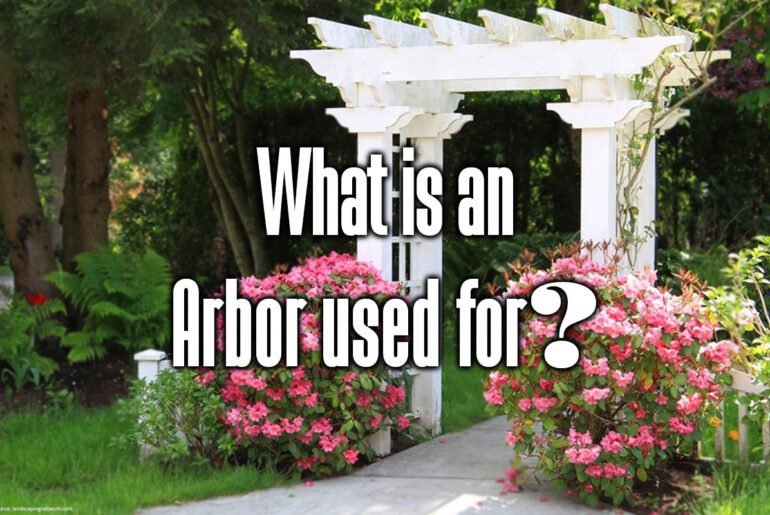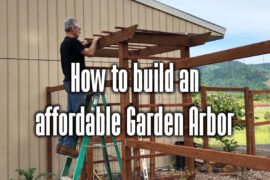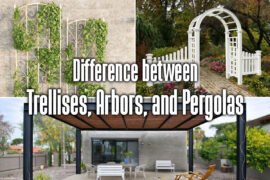What is an Arbor?
An arbor is a vertical feature in a landscape or garden that may provide shade, privacy, and an aesthetic touch. It may be used to blend in with the environment or separate, distinct garden sections and direct visitors. Its walls and roof are made of an open framework to allow colorful and fragrant vines to grow. An arbor may be built on a fence, wall, building, or stand-alone. A trellis is smaller and more delicate than an arbor, which is a significant structural component. Arbors are made from wood or wrought iron and may be built by hand or obtained at a garden center or online.
Arbors are made up of two or four posts with a basic slatted roof (often arched, but not always). For a more enclosed look and to aid vines in attaching better, arbor sides can be open or covered with lattice or trellis work.
The Basics of Arbor Building
Consider incorporating the architectural elements of your home while building an arbor for your yard. These will assist in linking the house with the surrounding nature.
The typical height of an arbor is 8 to 10 feet, giving plenty of room for walking beneath and maintaining vines or plants that grow overhead. Regardless of whether it’s stand-alone or connected, an arbor is supported by columns or posts that hold horizontal beams, rafters, and arches in place. The basic or luxurious detail of a wooden rafter can be determined by scrollwork and notches. The arch or roof can also be covered with lattice, lath, or shade cloth in addition to vining plants.
Arbors may be constructed from regular wood – just make sure it is sturdy enough to support vines, which can become woody and heavy as they develop. They can be bought in assembled kits and come in materials such as iron, bamboo, and other metals.
Arbor vs. Pergola
A pergola, like an arbor, maybe built independently or attached to a home on at least one side. Pergolas, like arbors, are typically constructed over a patio or deck as a shade structure. Pergolas are built on the same post-and-beam foundation as arbors. When built on a home, a pergola extends from the roof and creates a shaded space that joins the house and yard.
A freestanding pergola is one with four or more columns or posts. It is suitable for a traditional flat roof with beams left alone in one direction or topped with cross beams or slats.
The arbor has an open ceiling, which can be flat or arched.
What Is the Difference Between a Gazebo and an Arbor?
Arbors and gazebos are both types of garden structures that give shade from the sun while also providing cover during chilly evenings. Both also have seating, relaxation, and a garden view or place to entertain. These two structures, when planned and positioned correctly, may connect a home to the environment, guide foot traffic, frame an outstanding vista or conceal an unsightly one.
Gazebos and arbors can be created or may be found in a range of designs, from rustic to Victorian to contemporary. A solid roof overhead provides a sense of enclosure to a gazebo, even though it is built with open, airy framing. It’s also significantly larger than an arbor. Adding outdoor drapes or curtains on at least a few of the open sides can make your gazebo more secluded.
On the other hand, an arbor has a more open framework on its walls and roof, and vines frequently grow up its sides and overhead.




Comments are closed.